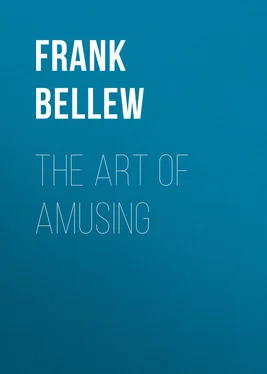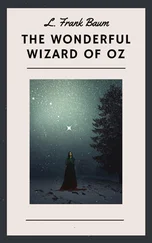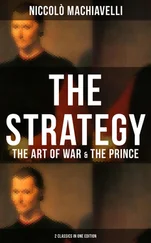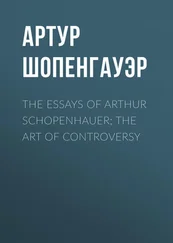Frank Bellew - The Art of Amusing
Здесь есть возможность читать онлайн «Frank Bellew - The Art of Amusing» — ознакомительный отрывок электронной книги совершенно бесплатно, а после прочтения отрывка купить полную версию. В некоторых случаях можно слушать аудио, скачать через торрент в формате fb2 и присутствует краткое содержание. ISBN: , Жанр: foreign_antique, foreign_prose, на английском языке. Описание произведения, (предисловие) а так же отзывы посетителей доступны на портале библиотеки ЛибКат.
- Название:The Art of Amusing
- Автор:
- Жанр:
- Год:неизвестен
- ISBN:http://www.gutenberg.org/ebooks/40309
- Рейтинг книги:3 / 5. Голосов: 1
-
Избранное:Добавить в избранное
- Отзывы:
-
Ваша оценка:
- 60
- 1
- 2
- 3
- 4
- 5
The Art of Amusing: краткое содержание, описание и аннотация
Предлагаем к чтению аннотацию, описание, краткое содержание или предисловие (зависит от того, что написал сам автор книги «The Art of Amusing»). Если вы не нашли необходимую информацию о книге — напишите в комментариях, мы постараемся отыскать её.
The Art of Amusing — читать онлайн ознакомительный отрывок
Ниже представлен текст книги, разбитый по страницам. Система сохранения места последней прочитанной страницы, позволяет с удобством читать онлайн бесплатно книгу «The Art of Amusing», без необходимости каждый раз заново искать на чём Вы остановились. Поставьте закладку, и сможете в любой момент перейти на страницу, на которой закончили чтение.
Интервал:
Закладка:
Punch dances a triumphant jig, and so ends the immoral drama of Punch and Judy.
Many more characters can be added at the option of the performer, besides which, jokes and riddles can be introduced to any extent. We have given the skeleton of the play, with all the necessary information for getting up the characters.
We will conclude this chapter with an excellent charade, the answer to which will be given in the next chapter:
My whole is the name of the school-boy's dread,
My first is the name of a quadruped;
My first transposed a substance denotes,
Which in carts or in coaches free motion promotes;
Transpose it again, and it gives you the key
Which leads to the results of much industry.
My second is that which deforms all the graces
Which cluster around the fair maidens' fair faces;
Transpose it, and it gives you the name of a creature
Of no little notice in the history of nature.
Now take my whole in transposition,
And it will give you the dress of a Scotch musician.
CHAPTER V
Heretofore the fireside amusements recorded by us have been rather masculine in their character. In this chapter we shall have the pleasure of describing an entertainment of more feminine qualities. It was a small party, of the description which the Scotch call a cookeyshine, the English a tea-fight, and we a sociable. A few young ladies in a country village had conspired together to pass a pleasant evening, and the head conspirator wrote us a note, which consisted of several rows of very neat snake-rail fences (not "rail snake" fences, as the Irishman said), running across a pink field. We got over the fences easily, and found ourselves in a pretty parlor, with six pretty young ladies, one elderly ditto, and a kind of father. The ladies, as we entered, were engaged in making tasty little scent-bags. We had often seen the kind of thing before, but never so completely carried out.
The principal idea consisted in making miniature mice out of apple-seeds, nibbling at a miniature sack of flour. But in this case they had filled the sack with powdered orris-root, and the small bottles with otto of roses, making altogether a very fragrant little ornament. The subjoined sketch will convey the idea to any one wishing to try her hand at this kind of art.
As to the process of manufacture, that is simple enough: you first make neat little bags of white muslin, and with some blue paint (water color) mark the name of the perfume, in imitation of the ordinary brands on flour-bags; then fill the bag with sachet-powder and tie it up. You then get some well-formed apple-seeds, and a needle filled with brown thread or silk with a knot at the end; after which pass the needle through one side of the small end of the seed, and out through the middle of the big end; then cut off your thread, leaving about half an inch projecting from the seed; this represents the tail of the mouse. After this you make another knot in your thread, and pass it through the opposite side of the small end of the seed, bringing it out, not where you did the other thread, but in the middle of the lower part, that part, in fact, which represents the stomach of the mouse. You can now sew your mouse on the flour-sack. It should be borne in mind that the two knots of thread, which represent the ears, must appear near the small end of the seed. We once saw some mice made of apple-seeds where the ears were placed at the big end, producing the most ridiculous effect. We annex enlarged diagrams of each style.
It will be seen that one looks like a mouse, whilst the other resembles a pollywog, or a newly-hatched dragon.
You must now get a good-sized card, and if you wish to have it very nice , paint it to resemble the boards of a floor. On this you sew your sack, and one or two stray mice who are supposed to be running round loose. Then having provided yourself with a couple of those delicate little glass bottles of about an inch and a half in length, which are to be found in most toy-stores, you fill them with otto of roses or any other perfume; and with a little strong glue or gum, stick them to the card in the position represented. If glass bottles are not to be obtained, you may cut some out of wood, a small willow stick perhaps being the best for the purpose; blacken them with ink, and varnish them with weak gum-water, at the same time sticking on them little pieces of paper to represent the labels, and, if you please, a little lead-paper round the neck and mouth of the bottles, to give the flasks a champagney flavor. The boxes and jars are likewise cut out of wood, and easily painted to produce the desired appearance.
After a time, while the young ladies were still at work on the mice like so many kittens at play, a practical young gentleman, in spectacles and livid hands, came in, and asked of what use were those articles . Upon which one of the young ladies very properly replied that they did not waste their time in making anything useful . This seemed to afford an opportunity to the young gentleman to say something agreeable in connection with beauty ; but he put his foot in it, and we heard him late in the evening, as the party was breaking up, trying to explain his compliment, which, though well intended, had unfortunately taken the form of an insult, and had not been well received.
We had observed, on entering, that one of the young ladies present wore in her hair a very beautiful white rose, and that another held in her hand a small bunch of marigolds. As the season was mid-winter, this fact attracted our attention, and we very gracefully complimented said damsel on the beauty of her coiffure , at the same time expressing our ardent admiration for flowers generally, roses particularly, and white roses above all other roses. "We had made a study of them." We spoke rapturously of them as the poetry of vegetation, as vestals among flowers, as the emblems of purity, the incarnation of innocence . Then the young lady asked us how we liked them boiled , and taking the one from her head begged us to wear it next our heart for her sake. We received it reverentially at her hand – it was heavy as lead. Her somewhat ambiguous language immediately explained itself as she gaily stripped off the leaves and revealed a good-sized turnip-stock on a wooden skewer. We felt slightly embarrassed, but got over the difficulty by saying that when we spoke so poetically we had no idea what would turn-up.
"Ah!" sighed one of the young ladies, "it is the way of the world; the flower worshipped from afar, possessed, will ever turn out a turnip!"
"Or," added we, "as in the case of Cinderella's humble vegetable turn up, a turnout."
This inoffensive little joke, being rather far-fetched, perhaps, was immediately set upon and almost belabored to death by those who understood it; whilst for the enlightenment of those who did not, we had to travel all the way to fairy-land, so that it was some time before we got back to vegetable flowers – a subject on which we felt not a little anxious to be enlightened, as we saw therein something that might interest our friends who meet by the fireside and help us in our occupation of unbending the bow. Marvellously simple were the means employed in producing such beautiful results. A white turnip neatly peeled, notched all round, stuck upon a skewer, and surrounded by a few green leaves, and behold a most exquisite white rose, perfect enough to deceive the eye in broad daylight at three feet distance. The above sketch will explain the whole mystery at once.
On the same principle a marigold may be cut out of a round of carrot with a little button of beet-root for the centre; a daisy can be made from a round of parsnip with a small button of carrot for the centre; a dahlia from a beet; and several other flowers from pumpkins. It will be easily seen that a beautiful bouquet can be compiled of these flowers with the addition of a few sprigs of evergreen. Indeed, great taste and ingenuity may be displayed in managing these simple materials. When the process had been explained to us, as above described, we expressed our delight, at the same time saying carelessly that there were doubtless millions of ladies in the country who would find pleasure in learning so graceful an accomplishment. The gentleman with the gold spectacles was down upon us in a moment.
Читать дальшеИнтервал:
Закладка:
Похожие книги на «The Art of Amusing»
Представляем Вашему вниманию похожие книги на «The Art of Amusing» списком для выбора. Мы отобрали схожую по названию и смыслу литературу в надежде предоставить читателям больше вариантов отыскать новые, интересные, ещё непрочитанные произведения.
Обсуждение, отзывы о книге «The Art of Amusing» и просто собственные мнения читателей. Оставьте ваши комментарии, напишите, что Вы думаете о произведении, его смысле или главных героях. Укажите что конкретно понравилось, а что нет, и почему Вы так считаете.












